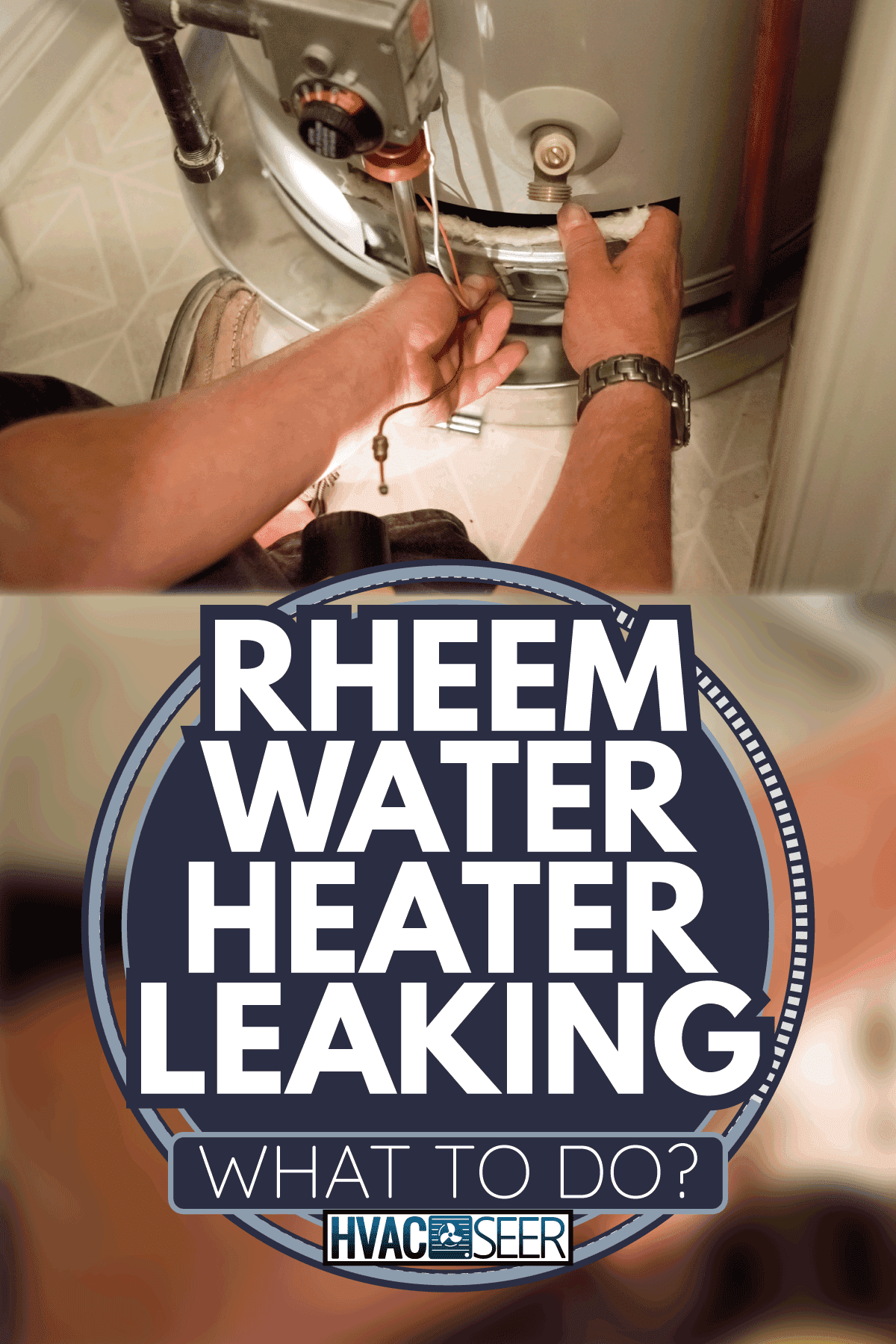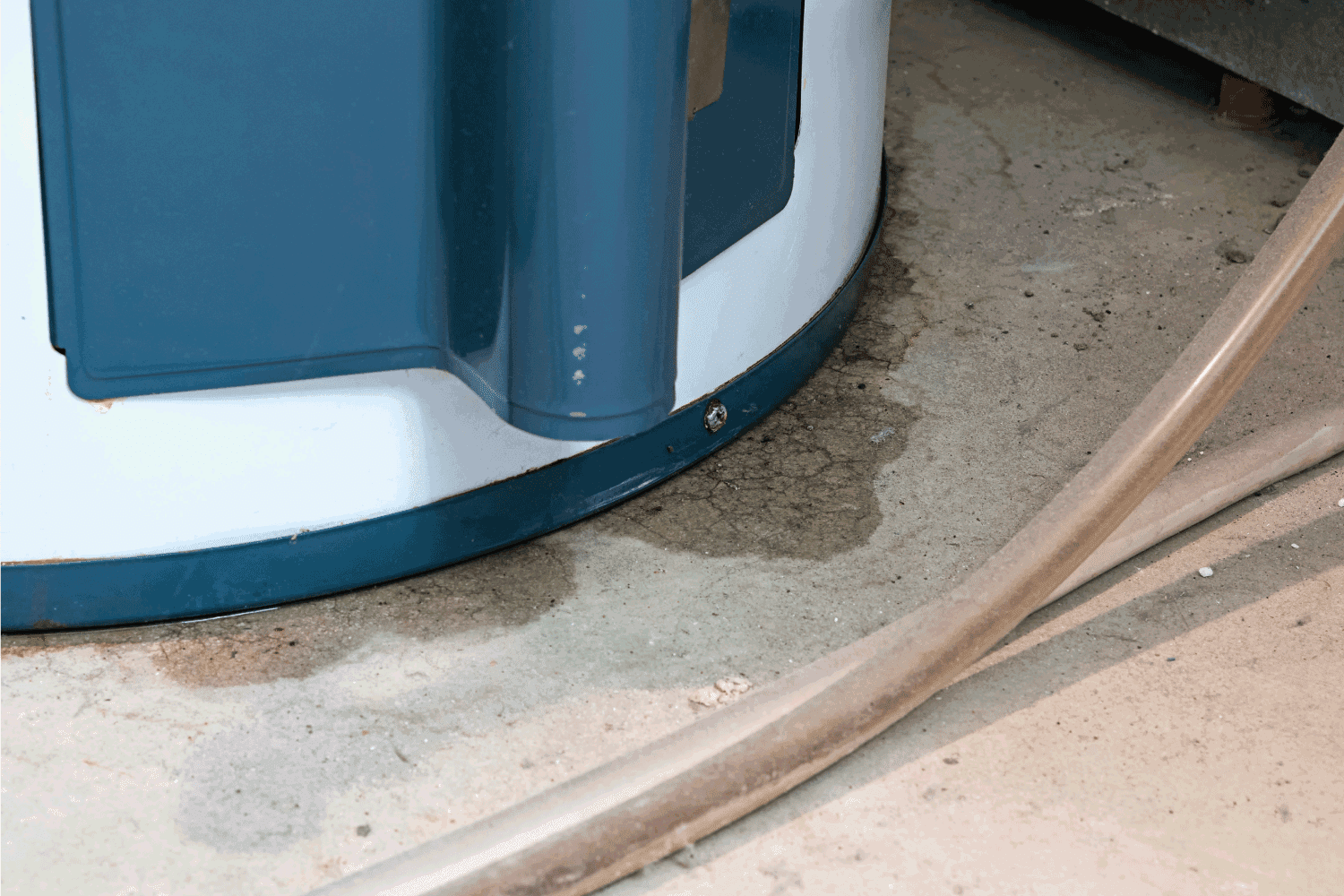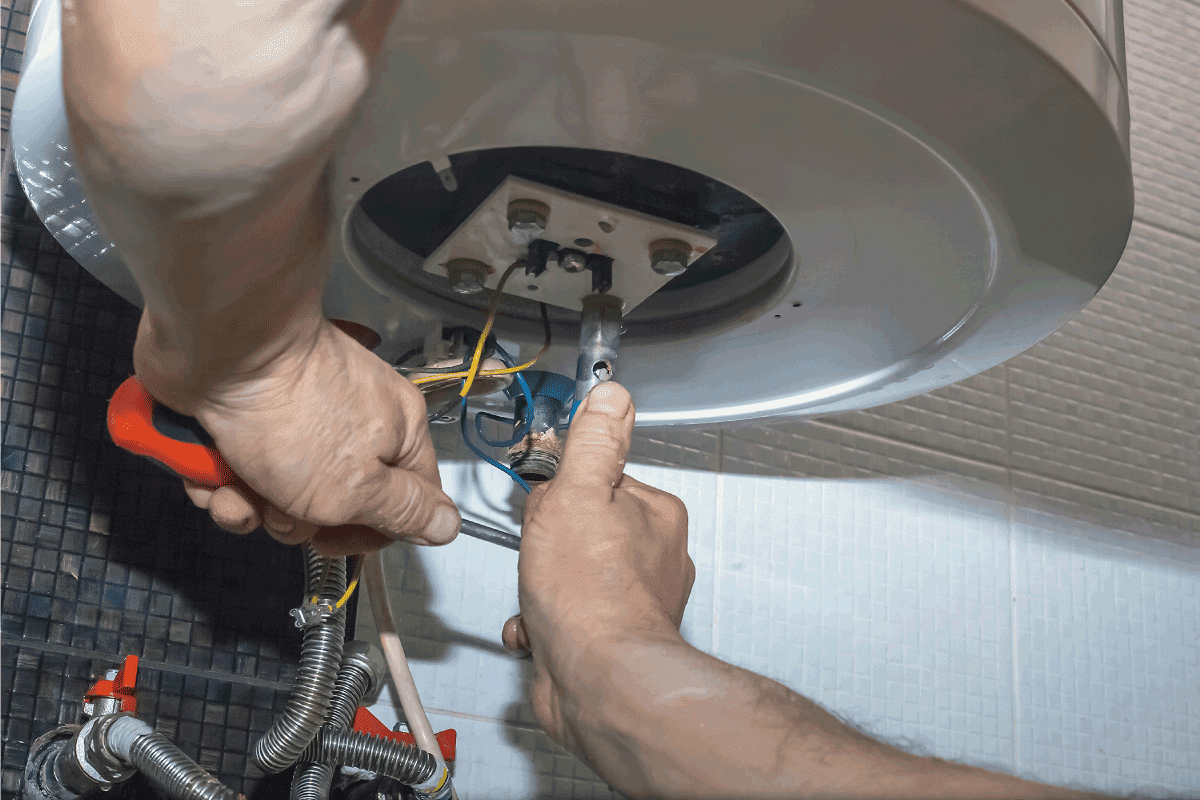A Rheem is a known brand supplying quality water heaters to its customers. However, these products aren’t susceptible to faults as they may encounter leaks. Now you’re wondering what to do if your Rheem water heater is leaking. We researched for your convenience, and here’s what we found.
Water leaks in Rheem water heaters can come from different sources, such as old age, excess pressure, and a faulty T&P valve. If the leak comes from a corroded T&P valve, here are the steps to replace this component to stop the leak:
1. Attach a garden hose to the drain valve and run the other end of the tube near a floor drain. 2. Shut off the cold water line from the water heater. 3. Open a hot water faucet somewhere in the house. 4. Release water from the drain valve and detach the run-off tube. 5. Wrap the new T&P valve with Teflon tape at least six times. 6. Install the new valve and connect the PVC drain line to it. 7. Lift the lever on the new T&P valve to help relieve pressure.
The replacement process is complete once a steady stream of water escapes the drain line pipe. But you might encounter mishaps if you don’t pay attention to certain details. Keep reading as we talk about this replacement process for Rheem water heaters in greater detail. We’ll also discuss other matters like the potential causes of leakage from water heaters.

How To Tell If Hot Water Heater Is Leaking?
Some indicators of water heaters leaking aren’t immediately obvious, unlike seeing water coming out of the fixture. These relatively subtle signs of water heater leaks include:
- Rattling sounds from loose nuts and bolts
- Sounds of water rushing or dripping
- The seals around the pipes or tubes have damage
- A pool of water beneath the water tank
- Rust and corrosion formation on metal parts

Take note that these signs can appear in different water heater models, including those from Rheem. Owners should apply the appropriate techniques to troubleshoot, repair, or replace offending parts when they notice the first signs of leaking. Failure to act quickly can lead to more disastrous outcomes and more expensive repair or replacement costs.
Why Would My Hot Water Heater Be Leaking?
Water heaters, including those from Rheem, can encounter leaks from different sources. Some of these causes are:
- Old age: Water heaters older than approximately 15 years may possess worn-outs that invite leaks to happen.
- Excess pressure: Using a high-temperature setting can also increase water pressure to the plumbing fixture.
- Damaged internal tank: Chips, cracks, and holes in the internal tank may allow water to seep through those crevices, increasing risks of damage to the entire water-heating system.
- Loose drain valve: An unsecured drain valve may have enough space for water to escape out of the plumbing fixture.
- Presence of sediments: Water heater owners that don't clean their systems regularly should expect sediments to build up at the bottom of their units. These substances can put unwanted pressure on the water heater's outer shell, which can lead to cracks and holes.

Aside from the causes mentioned above, another potential source of leaks in a water heater is a corroded anode rod. This component acts as a magnet to attract substances like magnesium and zinc that might bring harm to a water heater.
However, anode rods are sacrificial parts, which means they take the fall as opposed to other parts of the water heater. Thankfully, this rod is replaceable.
Check out this anode rod for water heaters on Amazon.

What To Do If Rheem Water Heater Is Leaking?
The first step is to fix a water heater leak is to diagnose the source of the issue. Haphazardly tinkering with the plumbing fixture without identifying the cause of the leakage can lead to additional unwanted damage to the system.
One of the causes of water leaks in a Rheem water heater is an old and/or corroded temperature and pressure (T&P) valve. If this is the primary suspect to the issue, ensure that you handle the part carefully. Touching it with bare hands can introduce burns from the 125-degree Fahrenheit temperature.
You should wear a respirator and rubber gloves to reduce the possibility of contracting health issues. Accidentally breathing, ingesting, or gaining direct contact with substances like sediments may put you at risk of health issues. Prolonged exposure to these harsh materials may also lead to increased skin aging.
After taking note of those precautions, here’s how you can troubleshoot, repair, and prevent water leaks from a Rheem water heater if the issue is coming from the unit’s relief valve:
What You’ll Need
- Adjustable wrench
- Flathead screwdriver
- Garden hose
- Teflon tape
- Rags, towels, or pieces of cloth
- Replacement T&P valve
- Extension bar (optional)
Step-by-Step Guide
- Attach one end of the garden hose to the drain valve. Then, run the other end of the hose to a nearby floor drain or a safe outdoor spot.
- Close the cold water through its shut-off valve.
- Open a hot water faucet somewhere in the house to help relieve excess pressure in the plumbing fixture. Close it after a few minutes of running time.
- Release about a gallon of water from the drain valve if the T&P valve is a top-mounted model. Otherwise, drain approximately 10 gallons of water if the valve is a side-mounted unit.
- Use the wrench to detach the run-off tube attached to the T&P valve. You might need an extension bar for this step to help you gain extra leverage.
- Apply Teflon tape to seal the threads on the new T&P valve. The seal should be at least six wraps.
- Install the new valve into the appropriate slot while paying attention to its orientation.
- Connect the PVC drain line to the T&P valve.
- Open the hot water faucet again, but this time open the cold water inlet line as well. The water heater tank should start filling with water at this point.
- Lift the lever on the T&P valve to open it. Then, close it and the hot water faucet after you see a steady stream of water escaping the drain line pipe.
- Clean the area with a cloth or rag afterward.
Take note that the replacement relief valve needed for this operation to be successful should match the old piece. Also, some Rheem water heaters may demand relighting the pilot light after this operation.
If the source of the water leak isn't a faulty T&P valve, you may consult the product owner's manual and request help from the company's customer service department for help. A specialized technician can also help you with this matter, albeit with additional costs involved.
You can also watch the video below to learn extra details in performing this fix:
At this point, you might also be curious to know about troubleshooting and repairing an Amana Furnace. If so, read our post on that topic to gain additional insight about that subject matter.
Check out this replacement T&P valve for Rheem water heaters on Amazon.
When To Call Plumber For Water Heater Problems?
Aside from water leaks from unknown sources, you may need to call a plumber if you encounter other problems from water heaters like:
- No hot water
- Inefficient hot water production
- The water heater is old
However, you can also call a plumber if you want to install a new water heating system for your home. If so, prepare to pay about $400 to $2,500 for the install process, depending on factors like the water heater's type and the company handling the task.
Also, you might call another specialist if your furnace and water heater is a 2-in-1 fixture. You can read our post on connected furnaces and water heaters for additional information about that topic.
What Are The Signs Of A Water Heater Going Bad?
Apart from frequent water leaks, keep a close eye on some indicators of when you may need to have your water heater repaired or replaced. Some of the signs to watch out for are:
- Presence of discolored or smelly water.
- Unknown sounds coming from the water heater.
- Reduced water pressure during operations.
- The water temperature varies frequently.

Final Words
Fixing a water heater leak typically demands specific steps based on the issue’s source. For example, replacing a T&P valve is necessary if the leak comes from an old and/or corroded model of that part. But think about requesting expert help if you don’t know the cause of the leak or have trouble repairing the source of the problem.


